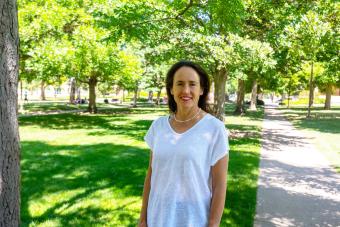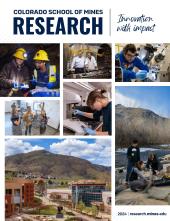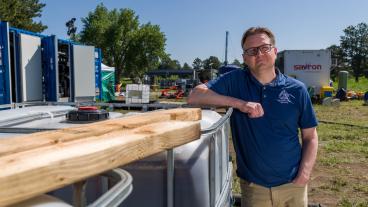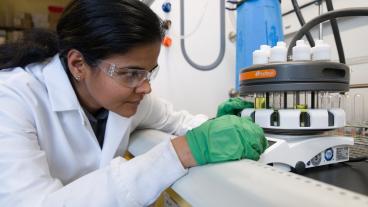Mines professor working to slow methane leaks in natural gas production
Dorit Hammerling co-founded Energy Emissions Modeling and Data Lab to directly implement processes to detect and stop natural gas leaks

In oil and gas operations, methane leakage can occur at industrial sites, contributing to greenhouse gas emissions. Predictive models are often used to accurately track when and where these leakages occur, but those models are reliant on details of site-specific variables, like terrain and weather conditions.

To provide accurate data and modeling on the greenhouse gas emissions occurring across energy supply chains, the Energy Emissions Modeling and Data Lab (EEMDL) was created. Based at the University of Texas at Austin, EEMDL is an interdisciplinary group of faculty and students from three universities — Mines, Texas and Colorado State University — that work in conjunction with industry stakeholders.
Dorit Hammerling, associate professor of applied mathematics and statistics at Mines, is a cofounder of EEMDL, focusing on the computational work behind the models that accurately track methane emissions in key areas aroundthe United States and Canada. Along with several Mines graduate students, she tests and implements these models onsite at natural gas operations.
Hammerling detailed the work she has been engaged in for the last fiveyears through the initiative and how it can lead to reduced greenhouse gas emissions in oil and gas operations.
Q: What is the focus of EEMDL, and what is your role in the initiative?
Hammerling: EEMDL is focused on finding transparent solutions to enact methane emission reduction at oil and gas facilities. My particular role is as an environmental statistician, and I specialize in making sense out of the data collected, from things as varied as sensors, airplanes and satellites, and characterizing methane emissions with different methodologies.
Emissions measurements often only measure concentrations and not directly the flux rates, so I’m involved with mathematical or statistical modeling that translates raw measurements into what is actionable information. We try to localize where these emissions come from on a big facility and quantify where and how much leakage is occurring. And we dot his in very transparent ways. We are able to show the EPA our open-source mathematical modeling framework that translates these important pieces of information.
Q: What kind of impact will this work have on oil and gas emissions and global mitigation efforts?
Hammerling: One of the most important things to do right now, in the time span of the next five years, is reduce methane emissions. We are working collaboratively with the companies, because they are the ones who must actually implement changes, and we spend a lot of time on the sites and have online access to them. The types of methods we develop, we really need to develop them at the facilities because we have to be sure the mathematical modeling will work on actual oil and gas sites in real time.
Q: How does this work tie into the Global Methane Pledge?
Hammerling: This work is heavily motivated by the Global Methane Pledge. It’s really all about making that a reality and being able to quickly find these leaks on sites based on measurement.
Implementation is happening while we’re working on it. For example, we will literally work together with the operators and the people who provide the sensors, and we can immediately say, “Let’s replace the sensor and move it 10 feet away,” based on the modeling. We are also developing open-source software and writing articles so companies can replicate what we do. We are basically developing a blueprint of how you can efficiently install these types of technologies that quickly tell you where these leaks are happening.
Q: Why is Mines the best place to do this work?
Hammerling: We have a great Petroleum Engineering Department. I happen to be an engineer, but mainly I’m a statistician. I’m no expert in petroleum engineering, so that department has helped us enormously to understand what production flows look like. The Global Energy Futures Initiative has been helpful as well with its emphasis on the future of energy.
The fact that Mines is so small and focused on its mission is so great. We are able to find partners that help us advance what we’re doing and work collaboratively to figure out how the oil and gas industry can still do the same kind of work with quality output but having much fewer emissions.




